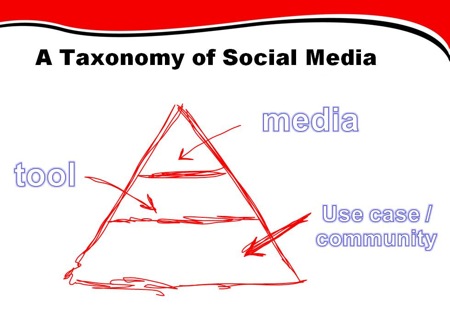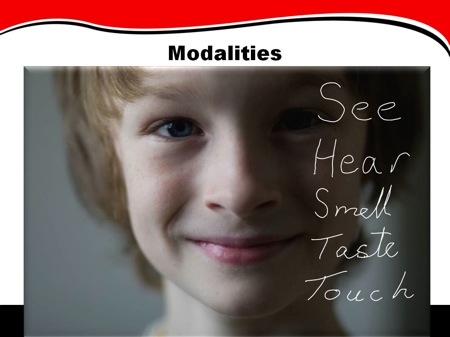Networks and Notworks
How about a taxonomy of social media platforms? In helping people understand the different social networking tools I’ve found it helpful to build a taxonomy of the components around social software. This is one way of viewing things, there are others that are equally valid, but for my purposes I was after something simple and functional.
This post is based on the talk I gave at Media Camp London 2 last month, with thanks to alex4d who diligently took notes and live tweeted the session. It was useful to see how someone else interpreted what I said. As an aside, in one of those “small world” incidences, Alex and I had worked at the same radio station back in the 80’s, although not at the same time.
It is a three layer model. Imagine a slice of a pie, with you on the outside, and digital media in the middle. Taking things one at a time:
The Media In Social Media
By media I mean media as in digital content, rather than “The Media” as in the press – the joys of overloaded words in English and the confusion they cause. Social tools use digital media based on the modalities of our senses. Today’s tools are built around the audio or visual modalities (or in the case of most video services, both). So far we are thankfully spared tools based around touch, taste and smell, but who knows what is around the corner!
I like the ideal of “VITAL”, which I first came across via Kosso, of Phreadz fame. VITAL stands for Video, Image, Text, Audio, and Links. I like it mostly because it is a memorable acronym, and is a good reminder that some tools might simply point to the media (with a hyperlink reference). Media deserves more discussion, but I’ll save that for the next post.
Social Tools
The biggest difference between platforms is not the media that they support, it is actually the tool they apply to the media. The predominant functionality of a social networking platform is in how it causes users to interact – that’s why it is called “social” after all. Social media platforms cause people to interact around digital media objects, by distributing them and allowing users to annotate them in different ways. Again, a fuller explanation is for a future post, but remember that the tools that the platform provides are a key differentiator. Specific tools drive behaviours and attract different types of users.
The Community
One of the most frequently overlooked, but obvious, differences between platforms is their communities. Flickr, Facebook, LinkedIn, YouTube et al all have their unique community. Individuals may belong to multiple communities, but it is almost impossible for two different platforms to have identical communities. Even if they did, the communities would still have distinct feels, based on how the tools cause people to interact. There is a further dimension to the issue of community. In the early days, a platform might only have a single “community”, but as they grow the reality is that the community fragments into multiple communities on the one platform. That is actually a good thing (see Dunbar’s Number and social media for more background), and these different communities aren’t completely separate.
Understanding the interaction between the community and the tool is essential to understanding how platforms evolve. A great tool with a poor community is unlikely to survive, while a mediocre tool with a great community can get off the ground – proof that, given sufficient thrust, pigs can indeed fly, on the Internet at least.
So, next time you are trying to understand the difference between two social networking platforms, try breaking it down into these layers:
- Media – What sort of medium is it based around? Is it direct, or link based. Text or Image?
- Tool – How does it operate on the media, and how does it enable users to interact?
- Community – what is the user base, or are their different subsets of users? Who are they?
In answering these questions, you will be able to build a picture of what differentiates the platform, and what use it might be best suited to.



